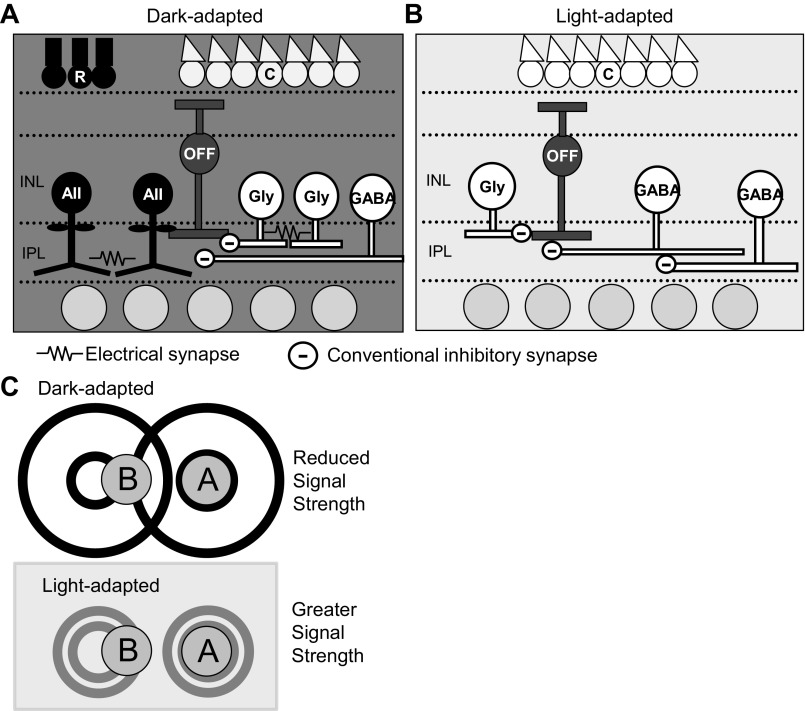Fig. 11.
Spatial circuitry models in dark- and light-adapted conditions. A: in dark-adapted conditions, OFF bipolar cells receive wide spatial inhibition from wide-field GABAergic amacrine cells. Coupling between both AII and other glycinergic amacrine cells likely contribute to increasing the wide spatial spread of glycinergic signals to OFF bipolar cells. B: in light-adapted conditions, OFF bipolar cells receive spatially narrow glycinergic input, likely due to uncoupling of AII and other glycinergic amacrine cells. Light stimuli distant from the bipolar cell likely active serial inhibitory connections between GABAergic amacrine cells, which would shorten spatial GABAergic signals to OFF bipolar cells. C: functional schematic of changing bipolar cell center-surround sizes. In dark-adapted conditions, OFF bipolar cells receive wide and strong inhibition, so their inhibitory surrounds are large. If 2 small spots of light are presented to the retina, spot A stimulates excitatory output from the center of one OFF bipolar cell, whereas spot B stimulates surround inhibitory connections to that same cell. Overall output is reduced in this instance due to the addition of inhibitory input. In light-adapted conditions, OFF bipolar cells receive narrow and weaker inhibition, so their inhibitory surrounds are small. In these conditions, spot B does not stimulate the inhibitory surround, and there is no reduction in excitatory bipolar cell output from spot A. Thus the strength of the bipolar cell output in the light-adapted case is stronger.

